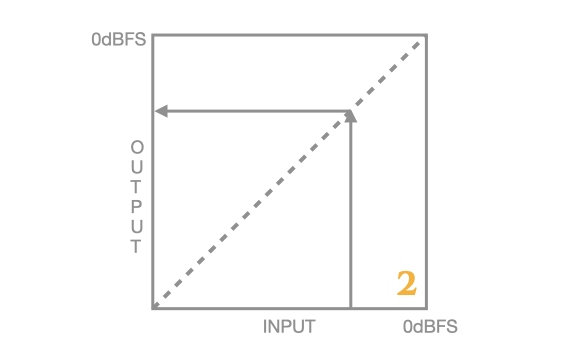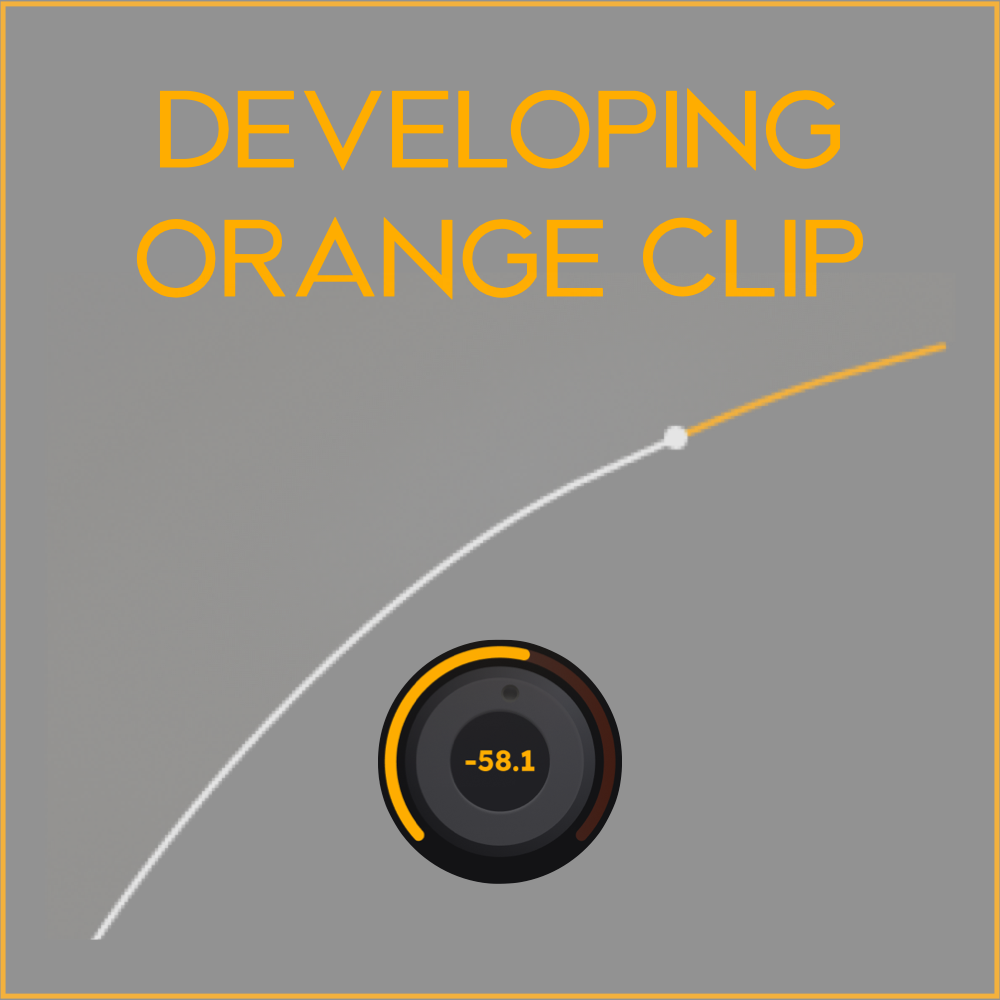3) Understanding Transfer Functions
In the last post I spoke a bit about why I built ORANGE CLIP, its sound, and some basics about its functionality. Today, I want to talk about some nerdier stuff: the basics of transfer functions and wave shaping.
Orange Clip is technically a wave shaper. Before you can understand what a wave shaper is, it is important to understand how to read a transfer function. A transfer function is a simple way to display the input signal and output signal of a nonlinear process.
Image (1) shows a linear relationship between input and output. The X-axis shows the input, or source, the Y-axis shows the output, or destination. The dotted line shows the linear relationship between input and output.
As you can see on image (2), an input signal of -5dBFS produces an output signal of -5dBFS. The arrow shows the signal going into the processor from the bottom and out of the processor to the left. There is no change to the signal - it is a linear process. -5dBFS input = -5dBFS output.
Image (3) shows a non-linear gain change. The output signal is slowly reduced as the input signal increases. In this example, an input signal of -5dBFS has an output of -9dBFS. The arc of the gain change from input to output is what defines the wave shaper's sound and it's what took us so long to get right about Orange Clip. Changing the amplitude of a signal like this is by definition, distortion. By changing the shape of the waveform, we are not only changing the peaks but also adding harmonics and augmenting the tone of the signal.
By gradually changing the ascent and descent of the waveform with ORANGE, we change the tone of the track by rounding the waveforms. This process may seem simple, but it can significantly alter the overall tone of the record. It's important to note that this process occurs below the clip point, meaning that it will affect the record even if your clip value is 0dB, meaning no clipping.
In the next post, I'll go a little deeper into how wave shapers work.
Be well,
Ryan Schwabe
Grammy-nominated and multi-platinum mixing & mastering engineer
Founder of Schwabe Digital
Designer of Gold Clip & Orange Clip
p.s. If you haven't already, you can buy or rent-to-own ORANGE CLIP right here.













